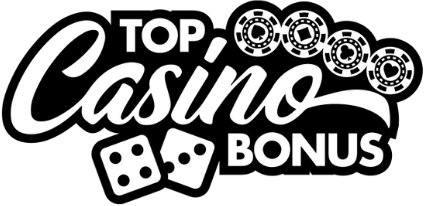Bankroll management for casino poker games
Most folks stepping into the poker pit think they need just two things: luck and a good bluff. But let me tell you, more have gone bust from mismanaging their bankroll than from bad beats. Bankroll management might sound boring, like balancing a checkbook. But when you’re deep in a session and variance rears its head, you’ll wish you had your numbers straight. This isn’t Vegas folklore. It’s gospel for anyone serious about surviving, and thriving, in casino poker games.
Table of contents
Understanding poker bankroll management fundamentals
First up, forget the idea that your bankroll is just your stack for one night at the tables. That’s playing blind. A real bankroll is a financial firewall, your dedicated war chest for poker only. Split that from your rent, groceries, and bourbon fund. If you can’t mentally and physically separate your poker roll, you’re already knee-deep in trouble.
Defining the right bankroll for your game type
Different formats, different risks. Jumping into No-Limit Hold’em tournaments? You need 50–100 buy-ins minimum. Cash games? You might get away with 20–30, depending on your edge and volatility. Let-It-Ride poker? Well, now that’s a more structured beast with defined betting rounds. It pays to learn the Let It Ride strategy before you even consider calculating your risk exposure there.
Skipping these numbers is like playing five-card draw with your hand face up. You’re just asking to be picked off.
Recognizing the silent bankroll killers
Some losses are loud. Others sneak up like a busted flush. Over the years, I’ve watched solid grinders get slow-bled by rake, tilt, and poor table selection, factors that quietly cannibalize even the fattest bankrolls.
The hidden cost of rake and fees
Let’s talk math. Even a 5% rake cap on a $500 pot is $25. Play 60 hands an hour, and you’ll burn hundreds in rake daily. Unless your win rate mops that up, you’re just feeding the house. Be meticulous about choosing rooms with decent rakeback and comps. Those pennies stack up fast into something that can keep your bankroll breathing.
Tilt: the bankroll butcher
I’ve seen players crush for hours, then blow their session in three bluffs chasing one bad beat. That’s not bad luck. That’s tilt, public enemy number one in bankroll management. Set loss limits. If you’re two buy-ins down due to poor play, walk. If it’s variance, reduce stakes, not aggression.
The golden rule: match your stakes to your roll
Let me be blunt, if you’ve got a $500 bankroll, you’ve got no business at $5/$10 no-limit. Pretending otherwise is just ego wrapped in denial. Always scale your buy-in to your bankroll, not your ambition. Even if you’re skilled, short bankrolls force you into suboptimal decisions, and that’s a dangerous slope.
Micro versus mid-stakes: the risk/reward ratio
Playing micro-stakes feels like running barefoot, you learn quickly, take a few cuts, but you rarely bleed out. That’s why they’re ideal for bankroll building. Mid-stakes games? That’s heavy weather. One bad session, and 10% of your bankroll’s gone. Respect the jump in skill and volatility. It’s a different animal entirely.
Stop treating mobile games like play money
The modern crowd loves mobile poker. Nothing wrong with that, some apps run slicker than live dealers. But mobile doesn’t mean monopoly money. Just because the interface is smooth doesn’t change the math. Whether you’re on your phone or a felt table, the same bankroll doctrines apply.
Eyeing mobile casinos? Start with the best mobile online casinos where you can verify odds, user trust ratings, and banking transparency before depositing a cent.
Navigating bankroll deposits with safe payment methods
Speaking of deposits, bankroll management isn’t just about play. It’s about how you move your money. Choose a subpar payment method, and you’ll find hidden fees or withdrawal delays gouging your returns before you even hit the table.
Top choices for bankroll maintenance
If you’re old school, using Visa for casino deposits is still a reliable play, accepted nearly everywhere, with strong fraud protection. For those who want no-fuss payouts, I’ve grown fond of Trustly and Instabank, nearly instant, and smooth like butter when paired with solid casinos. And if you’re juggling multiple sites or currencies? Skrill wallet services give you the freedom to move fast without dancing around international fees.
Tracking, reviewing, and adapting, religiously
You can’t fix what you don’t measure. If you’re not tracking your hands, sessions, and leaks, you may as well donate your roll directly to the casino vault. Use spreadsheets or apps. I like the old pen-and-notepad method after every session, post-mortem notes that develop poker instincts sharper than any HUD.
Session logs reveal the truth
Note hourly win rates, position-based profits, emotional state, and opponent tendencies. Over time, these snapshots tell a clearer story than your fading memory ever will. I once thought I was beating the 1/2 cash game, but my logs revealed I was bleeding slowly from continuation bets made out of habit, not logic.
Conclusion: bankroll respect is the long game
You’ll never find bankroll management sitting in a spotlight, stealing glory. It’s the dusty, reliable tool in the back of your poker toolkit, the one you forget until your stack’s torn to shreds. But those who master it survive the downswings, capitalize on heater streaks, and, crucially, stay in the arena long enough to win.
So, ask yourself, are you managing a poker bankroll or just gambling with rent money? If the latter, best to rethink before chasing your next flush. Dirty stacks and clean ledgers win more in the long run than flashy plays and empty pockets ever will.





0 Comments